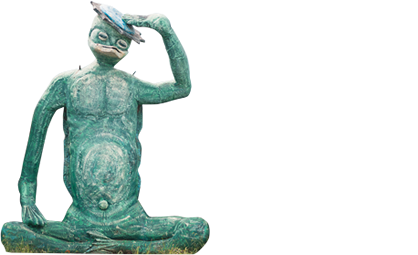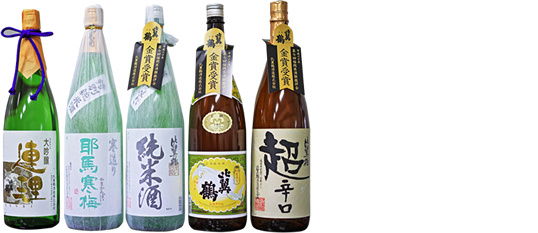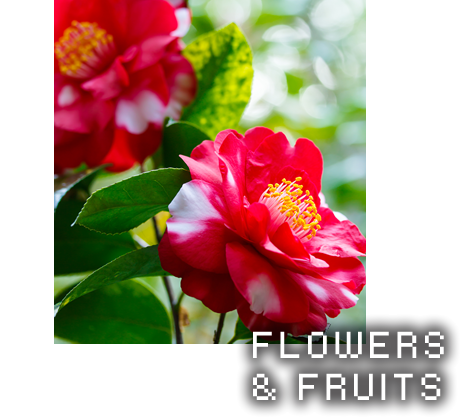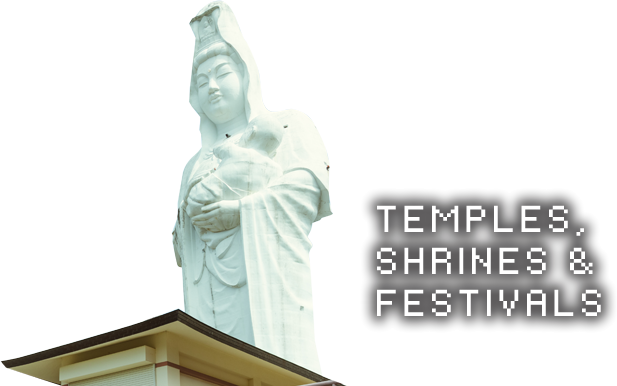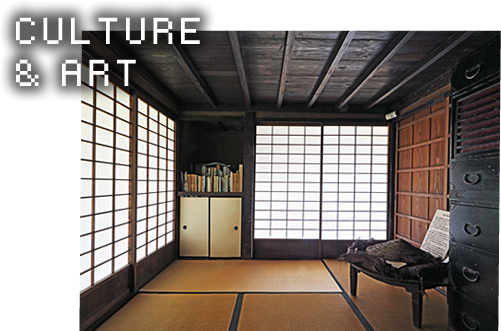 The Perfect Balance between
The Perfect Balance between
City and Countryside
The Perfect Balance between City and Countryside Kurume is a medium-sized city in Fukuoka Prefecture.
With a population of 300,000 people, it ranks third after Fukuoka and Kitakyushu cities in terms of size.
Located 30 minutes by train and less than an hour by car from Fukuoka City, Kurume is a transportation hub for southern Fukuoka Prefecture.
Why not take advantage of this convenient access to pick fruit year-round and be healed by Kurume’s bountiful nature and beautiful flowers? The blessings of nature have also produced a diverse food culture here. For example, Kurume is the birthplace of tonkotsu (pork-bone broth) ramen and is known for its abundant array of ingredients for yakitori (grilled meat on a stick). With sake breweries that are attracting attention around the world, Kurume is satisfying the appetites of visitors within and beyond Japan.

